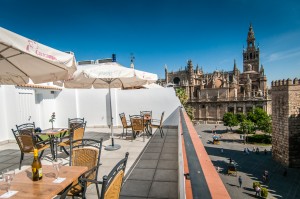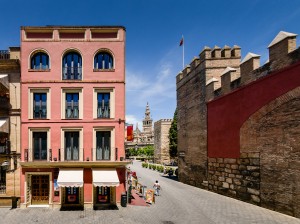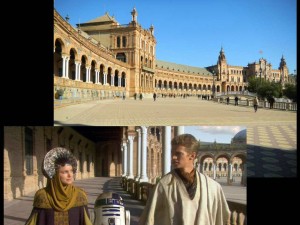Cualquier turista que toma la decisión de visitar la capital andaluza tiene claro dos cosas: que la mejor opción es reservar alojamiento en un hotel en el centro de Sevilla y que tiene que conocer los monumentos que están catalogados como Patrimonio de la Humanidad.
En concreto, en estos momentos tres son las construcciones que, desde la década de los años 80, tienen el privilegio de recibir esta distinción internacional:
- Catedral. El templo gótico más grande del mundo, que tiene su origen en el siglo XV. Concretamente, en el año 1433 fue cuando comenzó a construirse dicha edificación religiosa sobre los cimientos de la que fuera Mezquita Mayor. Cuenta con estancias y elementos de gran valor como sería el caso de la Giralda, su torre-campanario. También son dignas admiración las pequeñas capillas, el Altar Mayor, la Capilla Real y el Patio de los Naranjos.
- Reales Alcázares. Este palacio real tiene el privilegio de ser el más antiguo que sigue en activo de todo el continente europeo. En la Alta Edad Media se iniciaron las obras de construcción de esta joya del arte mudéjar y del gótico, aunque también cuenta con elementos de otros estilos posteriores. Salones y jardines espectaculares, como todo el conjunto amurallado.
- Archivo de Indias. En la segunda mitad del siglo XVIII fue cuando abrió sus puertas esta edificación que conserva la mayor colección de documentos relativos a las colonias españolas, entre los que destacan algunos realizados por Cristóbal Colón.
Estos son los tres monumentos que Sevilla tiene catalogados como Patrimonio de la Humanidad, pero ahora las autoridades de la ciudad quieren que también reciban esa distinción otros dos lugares emblemáticos: la Plaza de España y la Torre del Oro. De ahí que en estos momentos desde el Ayuntamiento se esté trabajando para elevar a la UNESCO la candidatura de estos dos símbolos hispalenses.
Seville has served as a backdrop for many movies, which make locals proud despite the collateral inconveniences of blocked streets, traffic jams, etc. It´s nice to see your city in a movie, especially if it´s a foreign movie. It´s flattering to see that an artist has chosen our monuments as the scenery for their work, even if it’s somehow hard to identify them, as was the case with the Plaza de España in StarWars: Episode II – Attack of the Clones.
Among the latest releases shot partly in Seville you may remember Knight & Day, starring Tom Cruise and Cameron Diaz. Yet, a notable faux pas in the film depicts the two protagonists in a chase scene through the narrow streets of Seville during the famous Running of the Bulls, which is typical of Pamplona’s San Fermínes celebration!
We´ll forgive this “poetic license” for the sake of added action and drama. But now that the San Fermines festivities have begun – they take place from July 6th to 14th – we might as well clarify that Pamplona is in the region of Navarra, in the north of Spain. Seville has a long tradition of bullfighting, and La Real Maestranza is one of the most renowned Plaza de Toros in the world, but we simply don´t run in front of bulls here.
So, if you wish to visit the centuries old Alcázar, tour the 3rd largest cathedral in the world and the magnificent Plaza de España, or experience a corrida de toros, you´ve come to the right place. If you share Ernest Hemingway´s passion for the San Fermínes, I´m afraid you´ve got a train to catch!



